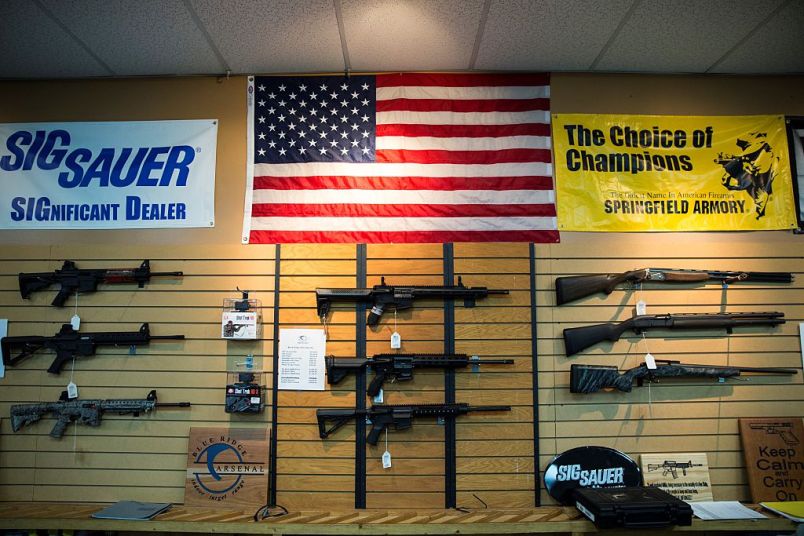Four months after a gunman shot 480 concertgoers from the window of his 32nd-floor hotel room, President Trump has ordered the Department of Justice (DOJ) to do something the department has repeatedly said it can’t do on its own: Ban bump stocks.
The result could well be the kind of inaction on gun violence that we’ve grown used to.
Bump stocks are sliding shoulder stocks that use a gun’s recoil to fire the next round, effectively making a semi-automatic gun into an automatic one. The Las Vegas murderer had 12 guns modified with those devices.
Responding to demands for action after last week’s school shooting in Parkland, Florida, Trump said in a memo issued Tuesday afternoon that he was directing DOJ “to propose for notice and comment a rule banning all devices that turn legal weapons into machine-guns.”
Of course, doing so would have done nothing to stop the Parkland shooter, who didn’t need bump stocks to kill 17 people, including a dozen children, in minutes. But leave aside the obvious inadequacy of the step as a response to gun violence. We’ve been here before.
After the Las Vegas shooting, Sen. Dianne Feinstein (D-CA) introduced legislation to ban bump stocks. The NRA opposed it, but said separately that ATF, an agency of DOJ, should review whether bump stocks require regulation under existing law.
“The NRA believes that devices designed to allow semi-automatic rifles to function like fully-automatic rifles should be subject to additional regulations,” the group said in a statement.
The Justice Department said at that time that it was reviewing whether it had the necessary authority to regulate bump stocks. But ATF has said repeatedly in the past, and said again in the wake of the Las Vegas shooting, that it doesn’t have the authority required.
In a 2013 letter to Congress, the agency wrote that “stocks of this type are not subject to the provisions of federal firearms statutes.” The letter details the logistical problems with applying the law to bump-fire stocks, which seem expressly designed to skirt prohibitions on machine guns.
Feinstein cited that letter in a statement released Tuesday in which she declared: “Legislation is the only answer.”
The ATF doesn’t appear to have changed its mind since sending the letter. Its director, Thomas E. Brandon, made the same point in a December hearing.
“ATF’s authority to regulate firearms is of course limited by the terms of [firearms laws from 1934 and 1968], and they do not empower ATF to regulate parts or accessories designed to be used with firearms,” Brandon said, according to a report on the hearing from the Washington Post.
Brandon reportedly said the same thing at a meeting of police chiefs in Philadelphia in October.
It all suggests that any move by the administration to regulate bump stocks would be anything but straightforward, if it happens at all. Regulating bump stocks, which are designed to skirt laws banning machine guns, seems like a cursory step — certainly an uncontroversial one, given the breadth of popular support for stricter gun laws. But even that may be beyond Washington’s abilities.







Trump never intended to ban bump stocks, any more than he favors a meaningful ban on assault weapons or substantial changes in background checks.
(Yes, I know I’m stating the obvious.)
Banning bump stocks, really? That’s sooo many mass shootings ago…
…tweets about this being the fault of the Democrats and their unwillingness to send their thoughts and prayers will be forthcoming.
thats b/c its a bullshit window dressing ban that doesnt mean shit. If anyone thinks that this guys going to close the door on his 21 million dollar NRA gravy train then their mistaken…
Cant wait to hear how they’ll manipulate the so called student listening thing so that it becomes an show of ego stroking and praise of all things trump…
Bah…If you announced the start of a campaign that said every black person should be armed to the teeth, you’d get legislation banning bump stocks the next day.